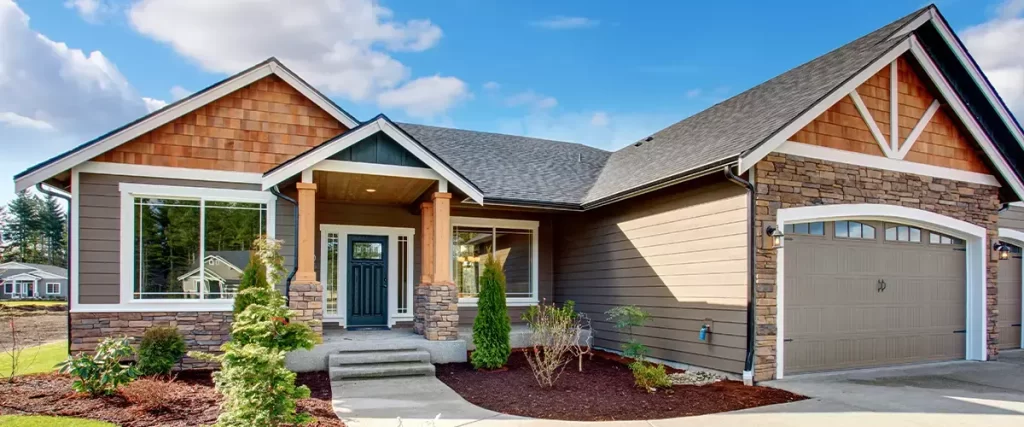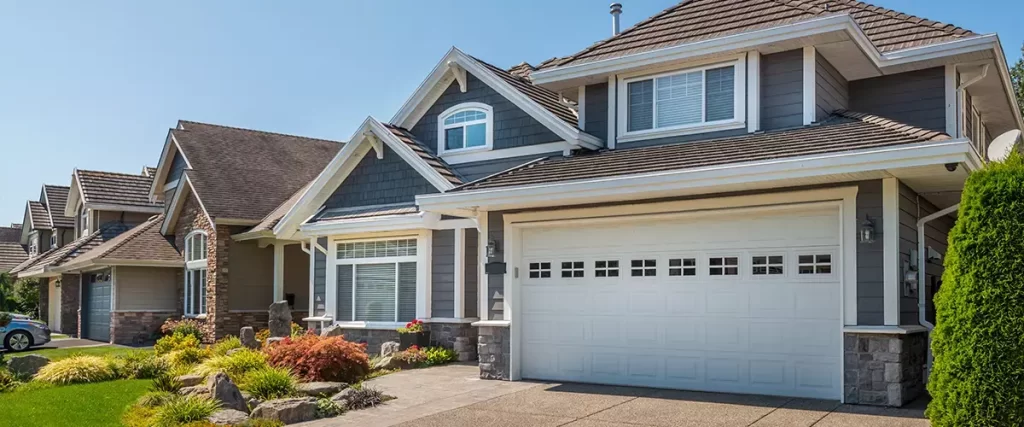Thinking about building your own home in 2025? You’re not alone. With rising rent prices and the desire for custom living spaces growing stronger, more people like you are exploring what it takes to turn a dream home into a reality.
But here’s the million-dollar question (sometimes quite literally): how much does it actually cost to build a house in 2025?
This guide breaks it all down—what’s driving the costs, how much you can expect to pay, and what hidden fees to watch out for. Whether you’re in the early planning phase or seriously considering making the leap, this article will walk you through everything you need to know to budget smartly and avoid nasty surprises.

The Average Cost to Build a House in 2025
Let’s jump right in: the average cost for home builder is between $300,000 and $500,000, but this number can shift drastically depending on several factors like location, size, materials, labor, and design complexity.
Here’s a rough breakdown of the costs per square foot:
- Basic Construction: $150–$200 per sq. ft.
- Mid-Range: $200–$300 per sq. ft.
- High-End Custom Builds: $300+ per sq. ft.
If you’re planning a 2,000 sq. ft. home, that means your costs could range from $300,000 on the low end to over $600,000 for a custom-designed home.
But that’s just the surface. Let’s dig deeper.
What Impacts the Cost of Building a Home?
There’s no one-size-fits-all answer, but here are the major cost drivers:
1. Size of the Home
Larger homes naturally cost more, but the cost per square foot can actually go down as you scale up, thanks to efficiency in labor and materials.
2. Materials and Finishes
Your choices for flooring, cabinetry, countertops, windows, and siding make a huge difference. For example:
- Vinyl siding costs far less than brick or stone.
- Quartz countertops can double your kitchen budget compared to laminate.
3. Labor Costs
Labor shortages are still affecting the construction industry in 2025. The demand for skilled workers is high, and that drives prices up—especially for electricians, plumbers, and framers.
4. Land Costs
Buying land can be a project in itself. You’ll need to consider:
- Grading and clearing the lot
- Soil tests
- Utility hookups (water, power, sewer/septic)
Expect to spend anywhere from $30,000 to $100,000+ for a build-ready lot, depending on location.
5. Permits and Fees
Plan for:
- Building permits
- Environmental impact studies (in some cases)
- Impact fees for infrastructure (roads, schools, fire department)
You might spend $5,000 to $20,000 just on these alone.
New Trends That Are Affecting Building Costs in 2025
A few things are changing the construction game this year:
- Energy Efficiency Standards: New building codes are pushing for tighter insulation, better windows, and high-efficiency HVAC systems. This increases up-front costs but saves money long-term.
- Smart Home Integration: More homeowners are budgeting for integrated systems like security cameras, lighting, and thermostats—all controlled from your phone.
- Material Inflation: While prices have stabilized since the peaks of 2022–2023, certain materials like concrete, lumber, and copper are still higher than pre-pandemic levels.
Hidden Costs You Might Not Have Considered
Here’s where people often get blindsided:
- Landscaping: Grading, sod, fencing, and irrigation can easily add $10,000–$30,000.
- Driveways & Walkways: Concrete or paver driveways are not always included in the base build.
- Design Changes During Construction: These are known as “change orders,” and they’re a budget killer. Stick to your plans unless absolutely necessary.
- Temporary Housing: Where will you live during the build? Renting while you wait can add up.
Budgeting Tips to Keep Costs Under Control
Want to avoid blowing your budget? Here’s what we suggest:
- Set a realistic budget—and add 10–20% for contingencies
- Get detailed quotes, not estimates
- Prioritize must-haves vs. nice-to-haves
- Work with a home builder who helps you value-engineer the project (without cutting corners)
Best Building Material Manufacturers in 2025
Choosing quality materials makes a big difference in durability, energy efficiency, and resale value. Here are some of the best manufacturers to look for this year:
- Andersen Windows – Known for energy-efficient and stylish window options with excellent durability.
- James Hardie – Fiber cement siding that’s resistant to weather and fire, perfect for long-lasting curb appeal.
- CertainTeed – High-quality roofing and insulation products with a good balance of price and performance.
- Owens Corning – Trusted for reliable insulation that improves energy efficiency and home comfort.
- Mohawk Flooring – Wide range of flooring options including waterproof vinyl, hardwood, and carpet.
- Sherwin-Williams – Leading paint brand with excellent coverage and a wide palette of colors.
- Whirlpool – Modern appliances that blend performance, efficiency, and design in one.
Why Our Team Is the Right Choice for Your Home Build
We’ve been doing this for years, and we’ve built homes for people just like you—real folks who want quality, transparency, and peace of mind.
Our team isn’t just a group of contractors—we’re experienced professionals who know the ins and outs of building modern homes in today’s market. When it comes to getting the best results, it pays to work with the best. Cutting corners during a home build always costs more in the long run.

Frequently Asked Questions
How long does it take to build a house in 2025?
On average, expect 7 to 12 months from groundbreaking to move-in. Custom builds may take longer.
Can I finance the construction of my home?
Yes, many people use a construction-to-permanent loan. You pay interest only during the build and convert it into a mortgage afterward.
Do I need to buy land before hiring a builder?
Not always, but it helps. Some home building contractor can assist you in finding and securing a lot as part of the project.
What’s the difference between a custom build and a production home?
A custom build means everything is tailored to you from the ground up. Production homes come with predefined plans and limited customization.
Are prefab or modular homes cheaper to build?
They can be, especially in rural areas or where labor is limited. But they come with fewer design options and may have zoning limitations.
How do I estimate the cost of utilities and hookups?
Ask your local utility providers. Costs vary but can range from a few thousand dollars to over $20,000 depending on how far your lot is from existing lines.
Is it cheaper to renovate or build new?
It depends. If your existing structure is sound, renovating might save you money. But major overhauls can sometimes cost just as much as building new.
What’s included in a “turnkey” home build?
A turnkey build means you get a home that’s fully ready to move into—walls painted, floors installed, fixtures in place. Landscaping and appliances may or may not be included.
Final Thoughts
Building a home in 2025 is no small feat, but with the right knowledge and team on your side, it’s more than achievable. It’s your chance to create a space that’s truly yours—customized to fit your life, your family, and your future.
If you’re serious about starting your home building contractor project, don’t wait. Contact us at (562) 319-3178 and let’s talk about what it’ll take to make it happen.
